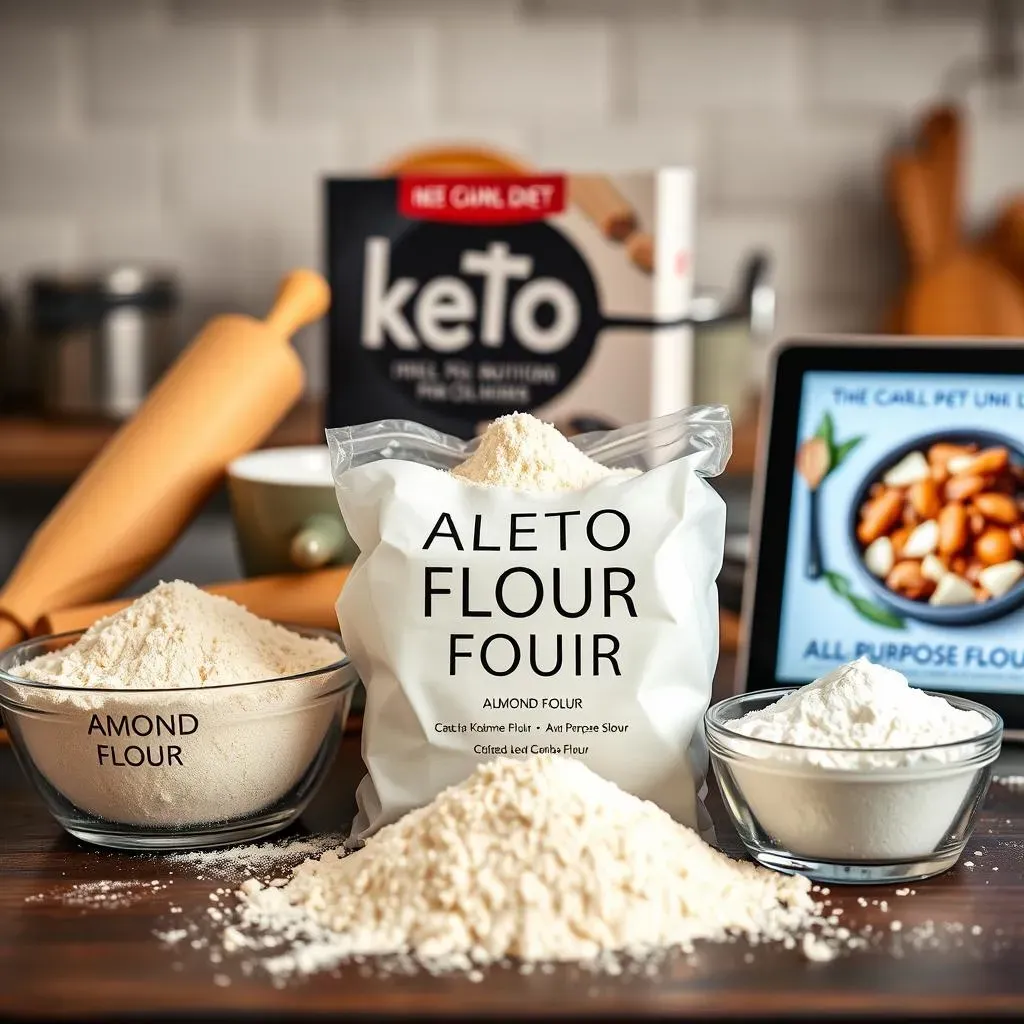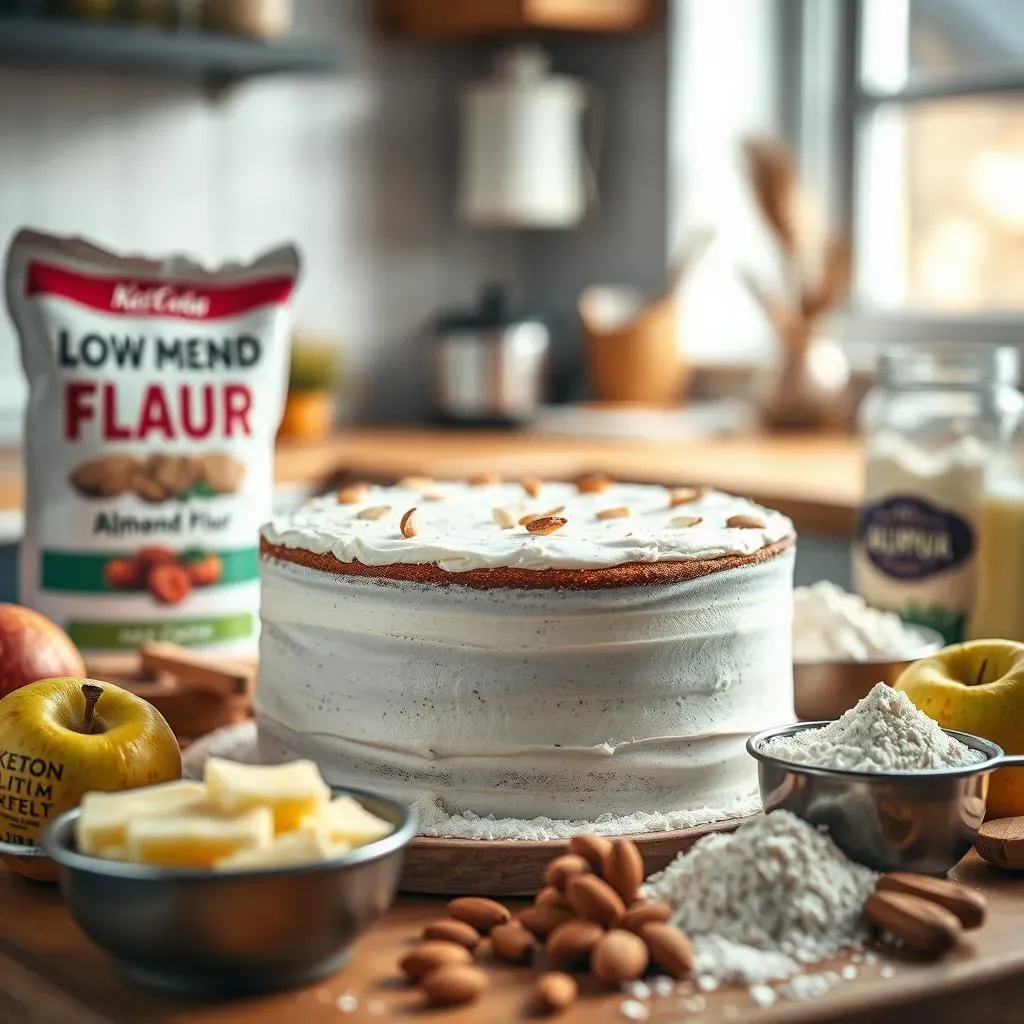Table of Contents
So, you're on the keto diet, and that delicious cake you're craving is calling your name. But the question burning in your mind is: "Is cake flour keto friendly?" Let's settle this once and for all! This article will guide you through the world of keto baking, specifically addressing whether traditional cake flour fits into your low-carb lifestyle. We'll explore the fundamentals of the ketogenic diet and how carbohydrate content impacts your macros. Then, we'll dive into the fascinating array of keto-friendly flour alternatives, comparing their properties and suitability for baking. Think almond flour, coconut flour, and more – each with its own unique texture and flavor profile. Finally, we'll arm you with practical tips and recipes for creating moist, delicious keto cakes that won't derail your progress. By the end, you'll be confident in your ability to indulge your sweet tooth without sacrificing your keto goals. Get ready to discover the secrets to keto baking success and satisfy your craving without the guilt! Let's find out if your favorite cake recipe can be adapted to fit your keto lifestyle, and if not, what fantastic alternatives are out there. Are you ready to find out if cake flour is your keto friend or foe? Let's begin!
Understanding the Keto Diet and Flour Choices
Understanding the Keto Diet and Flour Choices
The ketogenic diet, or keto, is all about drastically reducing carbohydrate intake and replacing it with healthy fats. This metabolic shift forces your body to burn fat for energy instead of glucose, leading to weight loss and other potential health benefits. But when it comes to baking, this means saying goodbye to many traditional flours, which are high in carbohydrates. Regular cake flour, for example, is a big no-no on keto because of its high carbohydrate content. It's packed with starch, which converts quickly to sugar in your body, throwing off your ketosis. This is where understanding the carbohydrate content of different flours becomes crucial. Knowing the net carbs (total carbs minus fiber) is essential when choosing keto-friendly alternatives. For instance, a single cup of all-purpose flour can contain over 40 grams of carbohydrates, whereas many keto-friendly options have drastically fewer. Think of it like this: you're trading your usual high-carb fuel source for a low-carb, fat-burning engine. Choosing the right flour is a key component of keeping that engine running smoothly! Want to know more about keto-friendly alternatives? Check out our guide on healthy keto cakes for more info.
Flour Type | Approx. Net Carbs per Cup (grams) | Keto-Friendly? |
|---|---|---|
All-Purpose Flour | ~40 | No |
Cake Flour | ~35 | No |
Almond Flour | ~10-15 | Yes |
Coconut Flour | ~50 (but high in fiber) | Potentially, use sparingly |
Remember, even within keto-friendly flours, there's variation. Some have more fiber than others, which impacts the net carb count. Always check the nutrition label for accurate information. It's not just about the carbs; the texture and how each flour interacts with other ingredients matter too. For example, coconut flour is very absorbent and requires careful attention in recipes. Almond flour, on the other hand, is often a good 1:1 substitute for all-purpose flour in many recipes. We'll explore these differences further in the next section. If you're curious about other keto-friendly baking options, check out this post on is cake keto-friendly for some more insights.
- Read nutrition labels carefully.
- Consider fiber content when calculating net carbs.
- Experiment with different keto flours to find your favorites.
Exploring KetoFriendly Flour Alternatives: Almond, Coconut, and More
Exploring KetoFriendly Flour Alternatives: Almond, Coconut, and More
Almond Flour: The Keto Baking Star
Almond flour is a fantastic keto staple. It's made from blanched, ground almonds, giving it a slightly nutty flavor and a texture that’s surprisingly similar to all-purpose flour. It’s relatively low in net carbs, making it a great choice for many keto recipes. It’s also naturally rich in healthy fats and protein, adding nutritional value to your baked goods. You can often substitute almond flour directly for all-purpose flour in many recipes, making the transition to keto baking easier. However, remember that almond flour can be a bit more expensive than other options.
One thing to keep in mind is that almond flour can sometimes result in slightly denser cakes compared to cakes made with traditional flour. This is because almond flour absorbs moisture differently. You might need to adjust your recipes slightly, adding a bit more liquid if needed. Don't let that deter you, though! The results are well worth the experimentation. For a deeper dive into keto baking, check out this post on healthy keto cakes.
- Naturally nutty flavor.
- Good 1:1 substitute for all-purpose flour in many recipes.
- Can result in denser cakes.
Coconut Flour: A Powerful, But Tricky, Ingredient
Coconut flour, derived from the dried flesh of coconuts, is another popular keto option. It's incredibly absorbent, meaning it requires more liquid in recipes than other flours. It also has a unique flavor that some people love and others find a bit overpowering. It's high in fiber, which is great for gut health, but this also impacts its net carb count. While a cup of coconut flour might have a high carb count, the fiber significantly reduces the net carb impact. This makes it a potentially useful addition to keto baking, although it needs to be used carefully.
Because of its absorbency, coconut flour is often best used in combination with other keto-friendly flours, like almond flour, to achieve the desired texture. It’s often used in keto muffins and breads to add moisture and a slightly different texture. However, it's crucial to follow recipes precisely when using coconut flour, as adding too much liquid can result in a gummy or soggy final product. Experimenting with different recipes is key to mastering this versatile ingredient. Want more ideas? See our article on what keto cake tastes like for inspiration.
Flour Type | Absorbency | Flavor Profile | Best Use |
|---|---|---|---|
Almond Flour | Moderate | Nutty | Cakes, cookies |
Coconut Flour | High | Coconutty | Muffins, breads (in combination with other flours) |
Baking Keto Cakes: Recipes and Tips for Success
Baking Keto Cakes: Recipes and Tips for Success
Sweet Success: Mastering Keto Cake Recipes
Now that we've explored keto-friendly flour options, let's get to the fun part: baking! The key to successful keto cakes lies in understanding how different flours behave. Almond flour, for instance, is often a great 1:1 replacement for all-purpose flour in many recipes, but you might need to adjust liquid amounts to achieve the right consistency. Coconut flour, on the other hand, is incredibly absorbent and usually works best when combined with other flours. Don't be afraid to experiment! Start with recipes specifically designed for keto baking—there are tons of amazing resources online. Many recipes use alternative sweeteners like erythritol or monk fruit to keep the carb count low. Remember, patience and practice are your best friends in the kitchen! If you're looking for some tasty inspiration, you might enjoy our post on keto cake taste.
When adapting traditional recipes, you'll likely need to modify the liquid content. Almond flour, for example, tends to absorb more liquid than all-purpose flour, so you might find yourself adding a little extra milk or cream to achieve the desired texture. Coconut flour, as we've discussed, is even more absorbent, so careful measurements are crucial to prevent a gummy or dense cake. Also, consider using a low-carb sweetener like erythritol or monk fruit. These sweeteners provide sweetness without spiking your blood sugar. Experimenting with different ratios and sweeteners will help you refine your keto baking skills. For more tips on keto baking, check out our article on healthy keto cakes.
- Start with recipes designed for keto baking.
- Adjust liquid amounts based on the flour you're using.
- Experiment with different low-carb sweeteners.
Troubleshooting Common Keto Baking Challenges
Even seasoned bakers face challenges when transitioning to keto baking. One common issue is dryness. Keto cakes can sometimes be drier than their traditional counterparts due to the lower moisture content of keto-friendly flours. To combat this, try adding a bit more liquid to your recipe, such as unsweetened applesauce or cream cheese. Another common problem is a lack of lift. Keto cakes can sometimes be denser than traditional cakes. To improve rise, ensure you're using a proper leavening agent, like baking powder or baking soda, and that it's fresh. Additionally, make sure your oven is properly preheated. Lastly, don't overmix the batter, as this can lead to a tough final product. The best way to perfect your keto baking is through trial and error. Don't be discouraged by initial setbacks; keep experimenting, and you'll soon master the art of creating delicious keto-friendly cakes.
Another thing to watch out for is the potential for a slightly crumbly texture. This is often due to the nature of keto flours. Adding a binding agent, such as xanthan gum or psyllium husk powder, can improve the texture and prevent crumbliness. These ingredients help create a more cohesive structure in the cake. Remember, you can always adjust recipes to your liking. If you're finding a recipe too dry, add a bit more liquid. If it's too crumbly, try incorporating a binding agent. And don't forget the importance of proper baking techniques. Always preheat your oven and check for doneness using a toothpick or cake tester. If you are looking for other keto-friendly recipes, check out our article on is cake keto-friendly.
Problem | Solution |
|---|---|
Dryness | Add more liquid (unsweetened applesauce, cream cheese) |
Lack of lift | Use fresh leavening agent, don't overmix |
Crumbly texture | Add binding agent (xanthan gum, psyllium husk) |
